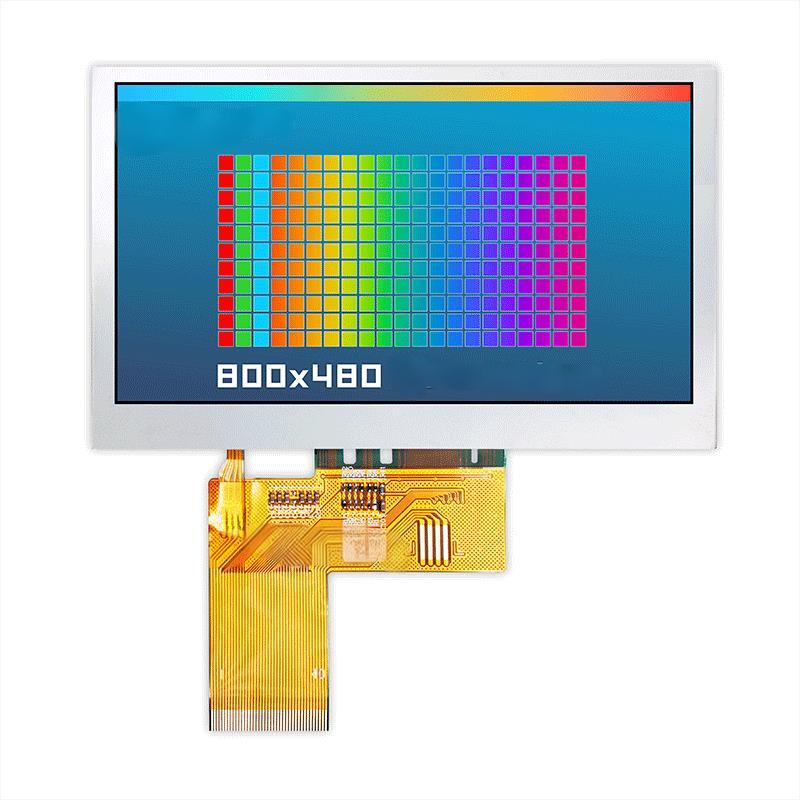
Finding the right 2.2 inch TFT display product can be challenging, given the wide variety of options available. This guide aims to simplify your search by providing comprehensive information to assist in your decision-making process. We'll cover crucial aspects such as resolution, contrast ratio, viewing angle, and backlight type, ensuring you understand the key specifications and how they affect performance. We'll also explore diverse applications where these displays shine, from wearable devices to industrial instrumentation.
Resolution, expressed as width x height (e.g., 320x240), determines the sharpness and clarity of the image. Higher resolution translates to more detail, but also demands higher processing power. Pixel density, measured in pixels per inch (PPI), impacts image sharpness. A higher PPI generally results in a crisper image. When selecting a 2.2 inch TFT display, carefully consider your application's requirements for detail and clarity.
The contrast ratio indicates the difference between the brightest and darkest shades the display can produce. A higher contrast ratio yields richer blacks and brighter whites, enhancing image quality. Brightness, measured in cd/m2 (candela per square meter), refers to the display's luminance. Higher brightness improves visibility in brightly lit environments. The optimal contrast ratio and brightness will depend on the intended application; outdoor applications might necessitate higher brightness than indoor ones.
The viewing angle determines the range of angles from which the image remains clear and undistorted. A wider viewing angle ensures good visibility from various perspectives. Response time, measured in milliseconds (ms), refers to the speed at which the display changes pixels. Faster response times are crucial for applications involving moving images or fast-paced interactions, such as gaming or video playback. For static displays, this factor is less critical.
2.2 inch TFT displays typically use LED backlights, offering various benefits such as energy efficiency and improved color reproduction. However, different LED types (e.g., white, RGB) and configurations impact power consumption and color accuracy. Consider the power requirements and longevity of the backlight when choosing a display for your specific application. A longer backlight lifespan translates to reduced maintenance and replacement costs.
The compact size of 2.2 inch TFT displays makes them ideal for integration into wearable devices such as smartwatches and fitness trackers. Their low power consumption is a critical factor for extending battery life in such applications.
In industrial settings, 2.2 inch TFT displays find use in handheld instruments, control panels, and data loggers. Their durability and readability in various lighting conditions are essential for reliable operation.
The smaller form factor is suited for use in a wide array of portable electronic devices ranging from MP3 players to portable medical devices. The size and resolution need to be considered relative to the functionality of each device.
The selection of a 2.2 inch TFT display depends largely on the specific requirements of your application. Factors like resolution, contrast ratio, brightness, viewing angle, response time, and power consumption should be carefully considered. For demanding applications, look for displays with high-quality components and robust construction.
Companies like Dalian Eastern Display Co., Ltd. offer a variety of 2.2 inch TFT displays catering to diverse needs. Their website provides detailed specifications and allows for easy comparison of various models.
| Model | Resolution | Contrast Ratio | Brightness (cd/m2) |
|---|---|---|---|
| Model A | 320x240 | 500:1 | 300 |
| Model B | 240x320 | 600:1 | 400 |
Note: The above table presents sample data and may not reflect actual product specifications. Always refer to the manufacturer's datasheet for accurate information.












